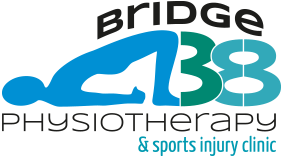Listening What? I hear you cry
Sensory information from the foot heavily influences balance, pelvic stability and posture. The foot sends information to your central nervous system which then unconciously adjusts your postion to maintain balance and stability. The joints of the knee ankle and foot must be able to adapt to the grounds surface so that the whole of the sole of the foot can gather comprehensive information to relay it up to the brain. The brain then processes this input to decide where we should position our centre of gravity.
Running, jumping or playing sport requires propulsion from the gluteals, stability around the pelvis and balance moving from one leg to the other. A good listening foot creates effective transfer of gluteal activation, strength and balance. A rigid foot reduces sensory information being relayed to the brain diminishing it’s role in balance and stability. This can compromise preformance or increase injury risk.
A rigid foot tends to grip the floor with the toes when trying to balance, or wobbles excessively from side to side or lifts the toes in order to maintain balance. A rigid foot can be a sign of underactive gluteals and can be associated with groin pelvis and lower back problems.
Why Can This Happen?
Fixing the foot and creating excessive muscle activity is often a compensatory strategy for lack of stability elsewhere in the body. Previous injuries such as ankle sprains, knee injuries can reduce rotational mobility of the lower leg affecting the normal mechanics of the knee and ankle. This can create overactivity in other muscles to compensate.
How Can I Tell If I have a good listening foot?
Stand on one leg and take a look. If you can see the tendons on the top of the foot and ankle standing out or your toes are gripping the floor, or the foot is rocking from side to side you are like to have a fixed, rigid narrow foot. The foot should feel broad and relaxed and only be making small adjustments to help with your balance.
Developing a Listening Foot
One of the most common phrases I hear in the physio clinic is “my balance is rubbish”. Most of these clients have a rigid foot but after practicing some listening foot techniques often find their balance improves surprisingly quickly. Practice the techniques below and see if you can improve your listening foot and balance.
- Sitting: place your bare feet on the floor and just take a moment to see what it feels like, explore shifting the weight from one part of the sole to another. Focus a little more now on slowly and smoothly moving the pressure towards the outside of your foot whilst keeping the toes relaxed on the ground and without moving the thigh. Use as little effort as you can. Now roll the foot the other way. Repeat with both feet. Does it feel the same? Is one way easier than the other? Is one foot better than the other foot. Practice this several times in the day until you can smoothly do this exercise.
- Standing: Fristly take note of what your balancing strategy is by balancing on one leg. Next practice this standing listening foot technique in this video by Jo Elphinston. Practice standing on one leg again. Are you better? Is the foot more relaxed?
Reference: Stability, Sport and Performance Movement – Jo Elphinston
